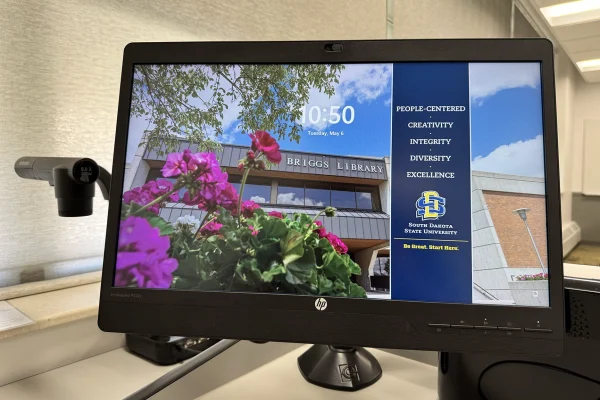Editorial: As fires engulf Australia, what disasters await the Midwest?
January 15, 2020
The hundreds of fires raging across Australia in the past month have put Dante Alighieri’s “Inferno” to shame. As destruction sweeps the nation, the fires have killed 28 people and incinerated more than 2,000 homes. Australia loses wildlife in uncounted numbers as the capital city of Sydney and neighboring New Zealand choke on ash and smoke. According to NASA, smoke has traveled high enough to enter the stratosphere and affect the entire planet. Following worsening fires in the United States, the fires in Australia are a violent eye-opener for governments across the globe.
Although far from the Pacific, the Midwest has cause for concern. While fires may not be common in South Dakota, the region suffers from rising global temperatures in other ways, such as extreme weather and delayed seasonal changes.
One potential cause of such changes, the polar vortex, is a naturally occurring low pressure region of cold air encompassing the North Pole. A powerful high-altitude current, known as a jet stream, forms a perimeter around this arctic air and prevents it from venturing south. When the jet stream containing this air weakens, cold fronts escape and move south into areas such as upper North America, bringing winter storms and cold snaps with them.
While the polar vortex itself is a natural weather system, global climate change may play a role in weakening it. According to the American Meteorological Society, the frequency of weakened vortex events increased over the past 37 years. Jennifer Francis, a senior scientist at the Woods Hole Research Center, attributes this to the loss of ice shelves. The bare ocean in their place allegedly creates hot spots within the arctic region, weakening the jet stream, delaying weather cycles and resulting in extreme weather events.
The polar vortex may have influenced the Missouri River Flood of 2011, a catastrophe that caused $2 billion in damages along the length of the Missouri River — $13 million of which were in South Dakota — and forced evacuations in Pierre. While La Nina is primarily to blame for the devastation, a destabilized vortex may have delayed seasonal changes, meaning snow melt came in union with spring rain. Further flooding took place in Brookings and the surrounding area as recently as mid-September 2019. Flooding in Madison led to 30 people needing emergency rescue.
Energy use is a major contributor to climate ills. Since the words “climate change” were first uttered, fossil fuels and non-renewable energy have been high on the proverbial most-wanted list. South Dakota State University has striven for more efficient energy usage since 1999. SDSU has saved an estimated $1 million in utility costs by constructing efficient buildings in compliance with the United States Green Building Council’s Leadership in Energy and Environmental Design guidelines. The university also lowered emissions in 2012 by switching from coal to natural gas for campus heating. SDSU continues seeking more efficient energy options and to reduce campus-wide material usage.
Every individual and institution is responsible for climate change in some proportion. We at the Collegian hope that SDSU continues to lead the green charge in the rural Midwest so that crises such as the Australia fires and the Missouri River Flood don’t happen again.
The Collegian Editorial Board meets weekly and agrees on the issue of the editorial. The editorial represents the opinion of The Collegian.





















